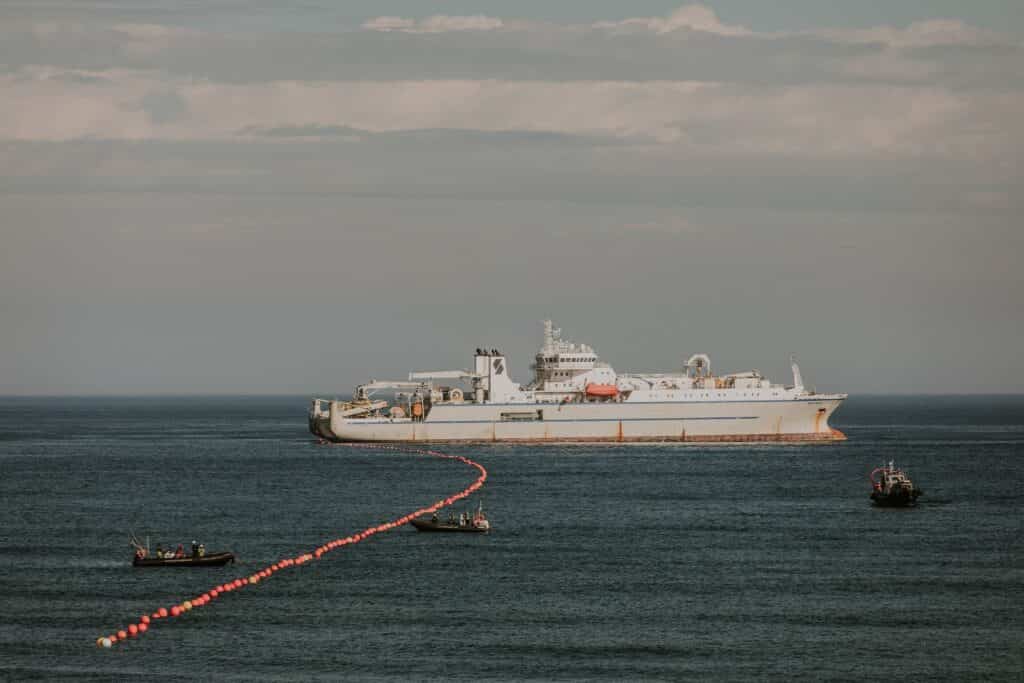In the hyperconnected world of 2024, the infrastructure supporting our digital lives has never been more critical or vulnerable. Across the oceans stretches a massive and complex network of submarine cables, transporting vital data, from commercial transactions to personal communications. Much of this infrastructure passes through an increasingly tense region: the South China Sea. With growing geopolitical rivalries between the United States and China, businesses face the urgent need to diversify their submarine cable networks to ensure that their digital operations remain resilient to potential disruptions.
The Growing Threat in the South China Sea
The South China Sea has long been a key artery for global data traffic, but its geopolitical landscape has become more unstable in recent times. As tensions between China and the United States escalate, the risks of relying solely on this region for submarine cable connectivity become more evident. Strict permit requirements in China have delayed critical projects, such as the SJC2 cable, which was supposed to connect Japan to Singapore. Additionally, US efforts to exclude Chinese companies from global submarine cable projects have further complicated the situation, leading to delays, increased costs, and longer implementation timelines.
Meanwhile, the demand for digital connectivity continues to grow rapidly. In the ASEAN region alone, the digital economy is expected to add $1 trillion to its GDP in the next decade. This makes a robust and resilient network essential to support this growth and help businesses overcome the challenges posed by submarine cables in the region.
Strategies for Building a Resilient Network
Diversifying submarine cable routes is key to mitigating risks arising from geopolitical tensions. New submarine cable systems are emerging, offering promising alternatives that bypass the high-risk zone of the South China Sea. Projects like Bifrost, Echo, and Hawaiki Nui, connecting Singapore and the Philippines to the United States, provide direct routes that avoid this tension-filled region. Another example is the Apricot cable, connecting Japan to Singapore via the east of the Philippines. These new routes not only offer greater redundancy but also enhance resilience, making them a strategic investment for any company looking to secure their digital infrastructure.
Contingency Plans and Technological Alternatives
In addition to diversifying routes, it is crucial for companies to develop contingency plans that include options such as satellite communication and microwave terrestrial links for short distances. Having backup plans ready for partial or total failures of submarine cables is essential. Investing in network monitoring and analysis tools can help proactively identify potential issues, while using advanced load balancing and traffic optimization techniques can maintain network performance under any circumstances.
It is also crucial to evaluate cybersecurity strategy and cloud infrastructure concurrently. Distributing data centers across multiple regions and leveraging cloud services for disaster recovery are key steps to ensuring business continuity.
An Uncertain but Opportunity-Filled Future
Geopolitical tensions in the South China Sea underscore the urgent need for companies to take a proactive approach to their digital infrastructures. By diversifying submarine cable routes, organizations not only protect their operations from potential disruptions but also ensure their continuity in an increasingly uncertain world.
While the South China Sea remains a focal point in the history of global connectivity, it is not the only option. Exploring new possibilities and routes can ensure that companies’ digital operations continue uninterrupted, regardless of the challenges that arise. via: Administration de sistemas.

